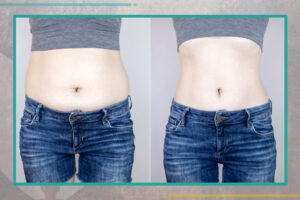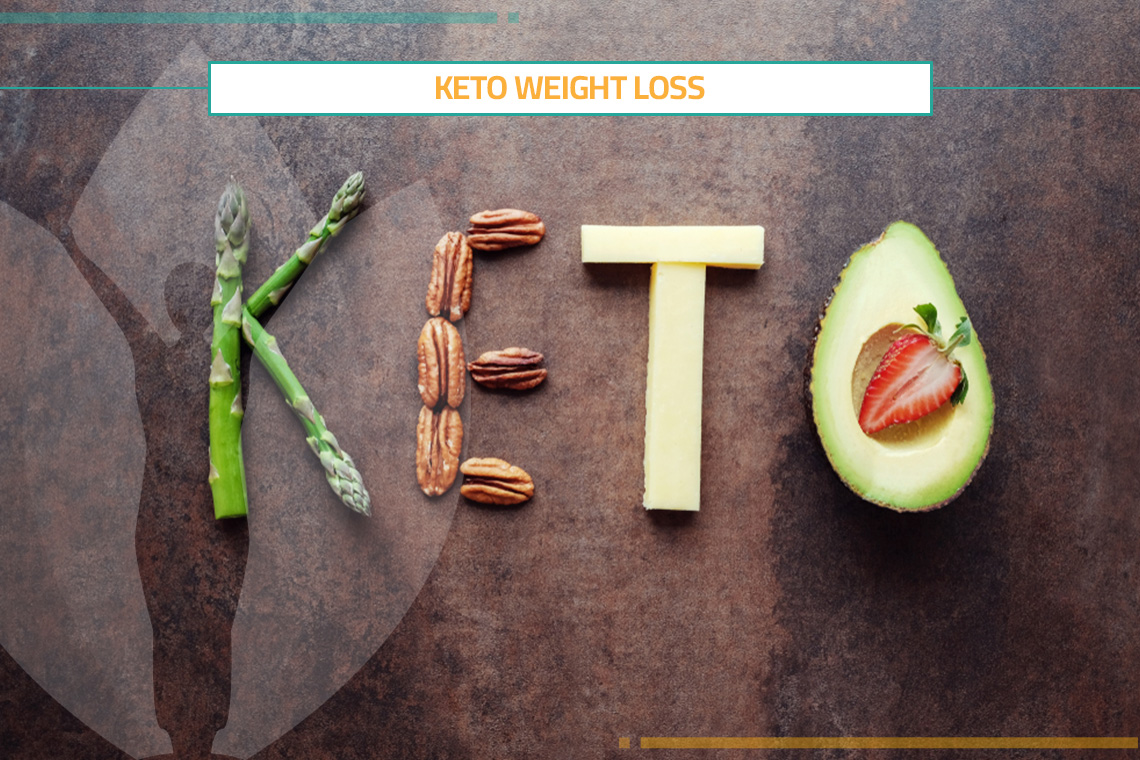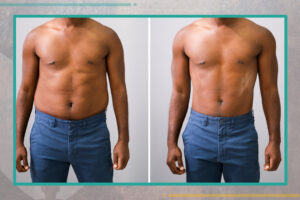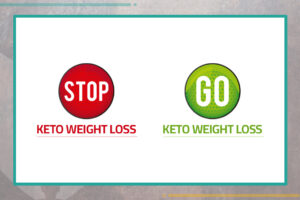Keto Weight Loss
Ketosis Weight Loss is a process where the body uses fat as its primary fuel source, replacing blood sugar (glucose) as its primary energy source. Carbohydrates, such as starches and sugars, are consumed in the diet, which are broken down into glucose and used as fuel. When carb intake is low, the body burns fat instead, producing ketones, which become the body and brain’s main energy source. The fat used to create ketones may come from the diet or the body’s fat stores. The liver produces a small amount of ketones on its own, but when glucose levels decrease, insulin levels decrease, causing the liver to ramp up production to provide enough energy for the brain. This results in high levels of ketones in the blood during ketosis.
How Does Keto Diet for Weight Loss Operate?
The body adjusts to using fats as its main energy source rather than glucose when carbohydrate intake is rigorously limited to around 50 grams per day (about 5% of total calories) and fat consumption is increased to about 75% of total calories. This change in metabolism causes the liver to create ketone bodies from fats, which act as a substitute fuel source for the body and brain. This process is called ketosis.

Safety and Things to Think about Keto Diet Plant for Weight Loss
To begin the ketogenic diet, one must progressively increase fat intake while decreasing carbohydrate intake in order to reach ketosis. Important measures include keeping an eye on food consumption, making sure you’re drinking enough water, and keeping your electrolyte balance, particularly during the “keto flu” adaption phase.
Common Keto Flu Symptoms:
– Sweet tooth cravings
– Dizziness sensations
– Mental haze
– The ability to irritate
– Having trouble concentrating
– Discomfort in the abdomen
– Feeling queasy
– Cramping in the muscles
– Muscle aches
– Having trouble falling asleep
Common Diseases of the Stomach
Keto Belly Fat
Ketosis is a state where the body converts glucose into energy, typically taking two to four days. However, it can take a week or longer depending on factors such as age, carbohydrate, fat, and protein intake, physical activity, metabolism, sleep health, and stress levels. A high-carb diet before starting a keto diet may take longer to reach ketosis as the body needs to exhaust its glucose stores first. Intermittent fasting, which involves eating all food within eight hours and fasting for the remaining 16 hours of a 24-hour period, can help get into ketosis faster.
What`re the Potential Side Effects of Keto Diet?
Although there are numerous advantages to the ketogenic diet, there may also be some drawbacks. “Keto flu,” which includes symptoms like headache, lethargy, and upset stomach, may be one indication of ketosis. Additional signs of ketosis could be:
1. “Keto” breath, or bad breath.
2. Constipation.
3. Sleeplessness.
4. Dehydration.
5. Bone fractures and osteopenia, or low bone density.
6. Elevated cholesterol levels, or hyperlipidemia.
7. Kidney stones.
Keto Adaptation Strategies
• Maintain hydration with plenty of water and salt.
• Supplement diet with sodium, potassium, and magnesium to replenish lost electrolytes.
• Engage in low-intensity exercises like swimming, yoga, or jogging.
• Avoid stress, excessive protein intake, and high-intensity workouts.
• Prioritize low-intensity exercise, optimize sleep quality, and practice mindfulness.
Best Keto Meal Delivery for Weight Loss
Which foods fit within the ketogenic diet?
High-fat dairy products like cheese, processed meats, seafood, oils, lard, butter, nuts, low-carb vegetables like leafy greens, and some fruits like avocado are among the foods that are typically permitted.
Which foods are off limits when following a ketogenic diet?
Since a normal ketogenic diet limits carbohydrates to fewer than 50g per day, it should come as no surprise that you will need to cut out bread, pasta, rice, cereals, and the majority of other baked items when you dramatically cut your carb intake. Perhaps less evident is the necessity of avoiding most fruits, legumes, beans, root vegetables, sweet corn, and starchy vegetables like potatoes.
For whom is the ketogenic diet inappropriate?
Before starting such a regimen, diabetics and anyone with a blood sugar management problem should talk to their doctor and medical team about the possible consequences. Due to the impact on blood sugar, problems are likely to arise. Likewise, someone who satisfies one or more of these requirements:
– Possess a family history of renal and/or liver disease,
– Be younger than 18, or be elderly,
– Have a pre-existing medical condition or are taking prescribed medicine, are pregnant, or are nursing
5 Tips before and after Beard Transplant
Other Frequently Asked Questions
What distinguishes diabetes-related ketoacidosis (DKA) from ketosis?
Diabetes-related ketoacidosis (DKA) is a distinct condition from ketosis. Your blood contains ketones when you’re in ketosis, but not enough to cause your blood to become acidic. It typically occurs while you’re on a low-carb diet or fasting. There is no danger from ketosis.
People with diabetes and those with undiagnosed diabetes are both susceptible to DKA. It occurs when your blood becomes acidic due to an excess of ketones brought on by insufficient insulin. Ketoacidosis brought on by diabetes is potentially fatal and needs to be treated right away.
How is the ketogenic diet followed?
It might be advisable to concentrate on foods that strengthen the liver, such as onions and garlic, before beginning the diet. This is because the production of ketones requires a lot of effort from the liver. Cutting back on sweets, coffee, and alcohol before beginning may also be beneficial. When on a ketogenic diet, make sure to eat a lot of non-starchy greens, including spinach and kale, which are low in carbohydrates but high in vitamins and minerals. If you want to follow this kind of diet, you should speak with your doctor to be sure it’s safe and suitable for you.
“Net carbs”: what are they?
“Net carbs,” a well-known but unregulated word in the keto diet world, describes the quantity of carbohydrates that the body absorbs and uses as fuel. The amount of indigestible carbohydrates (insoluble fiber and some sugar alcohols) is subtracted from the overall amount of carbohydrates to arrive at this value. This computation is rarely accurate or dependable, though.







